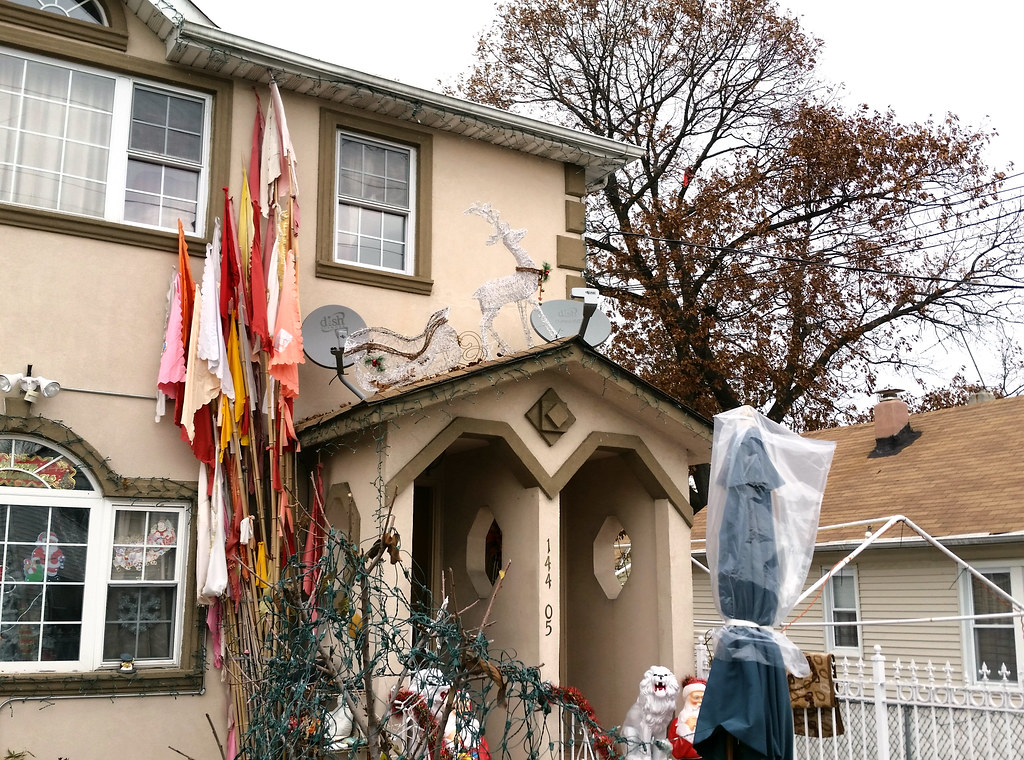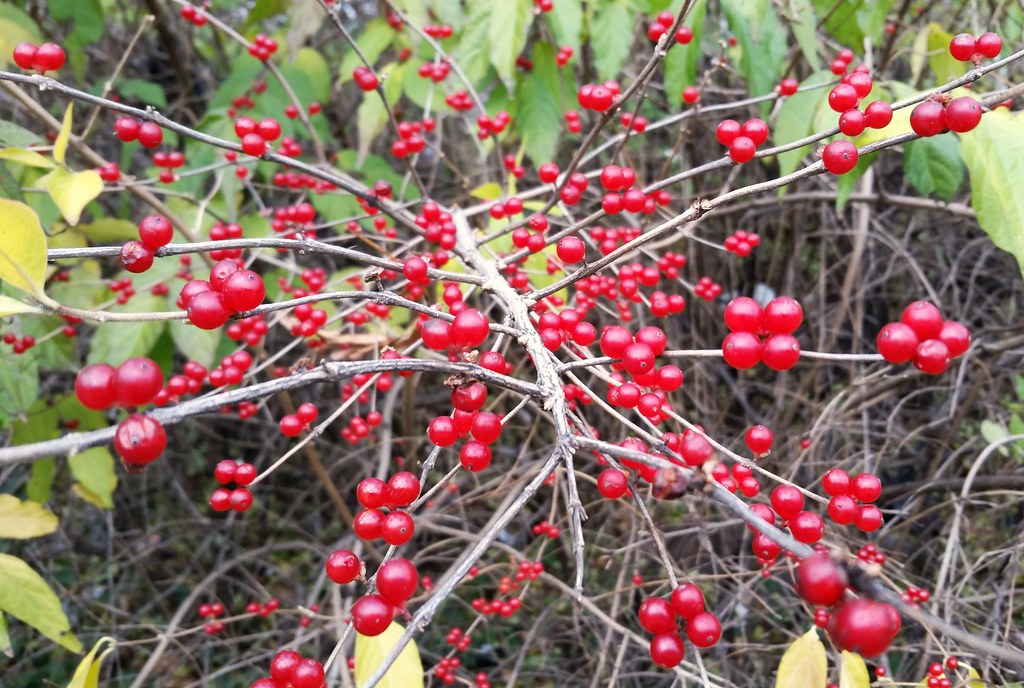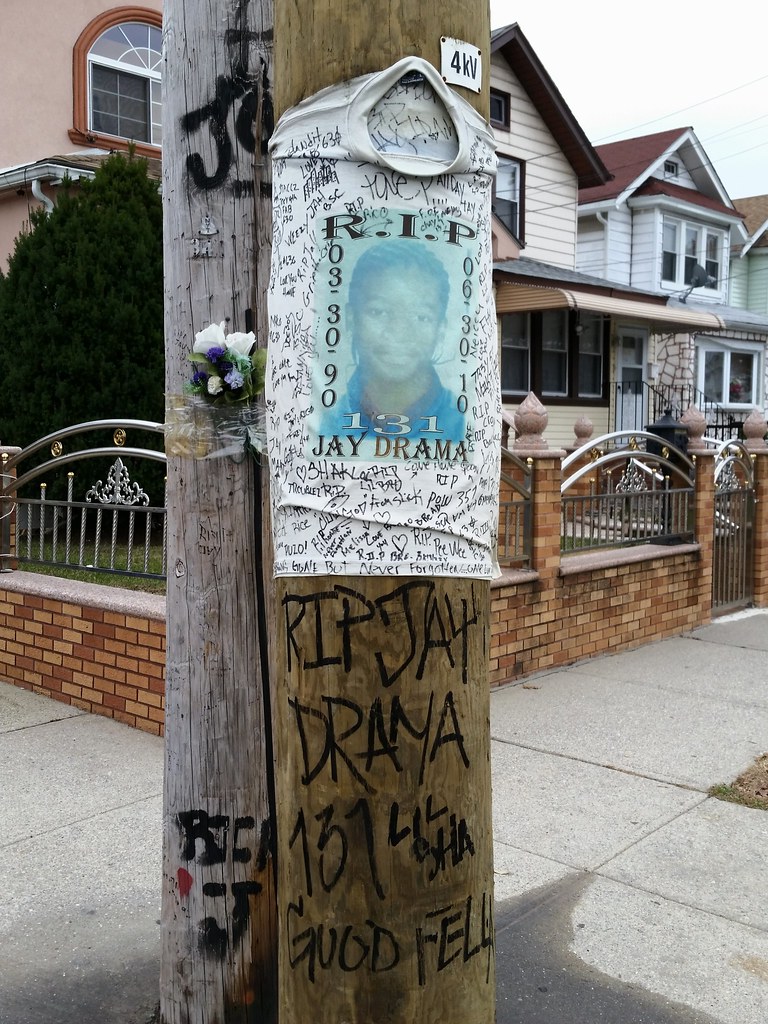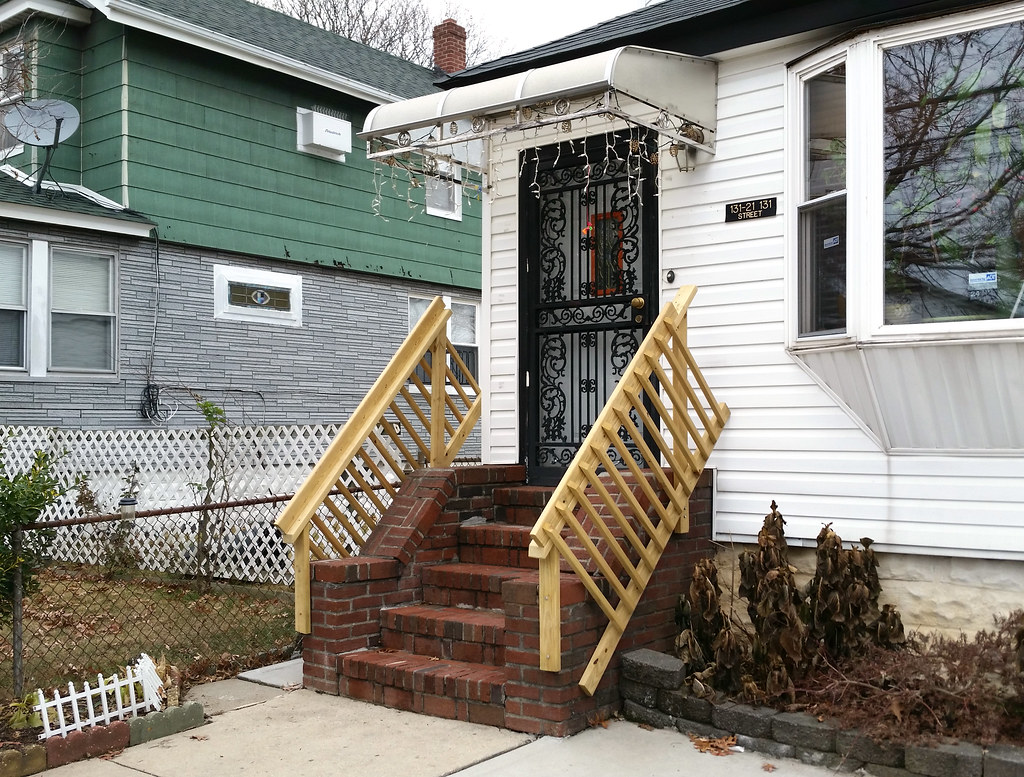
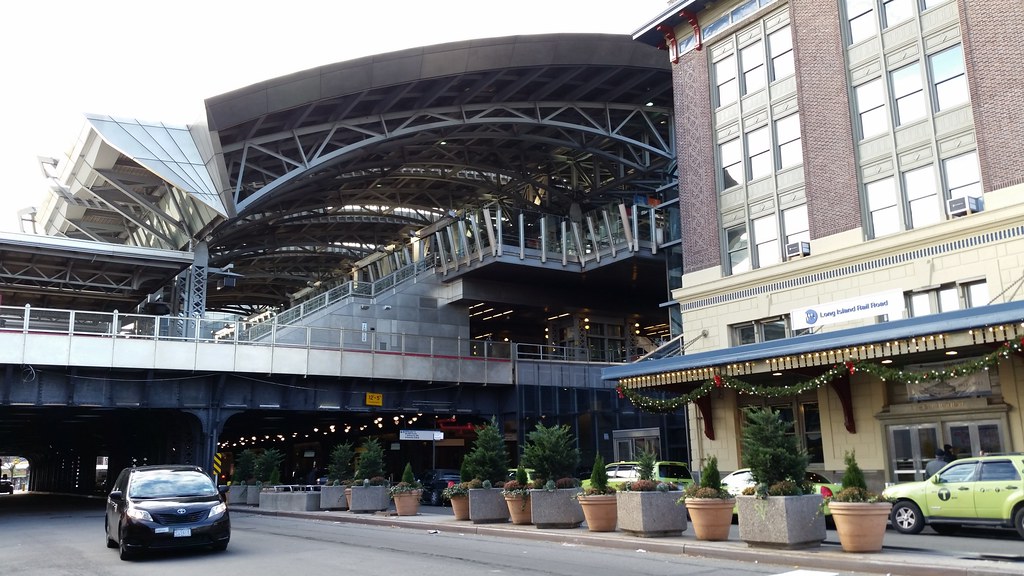
According to the MTA, this Long Island Rail Road station is "one of the busiest rail hubs in the nation. . . . Trains from 10 of the LIRR's 11 branches travel through Jamaica each day with weekday ridership exceeding 200,000 customers." The station is also the terminus of one of the two JFK AirTrain lines.
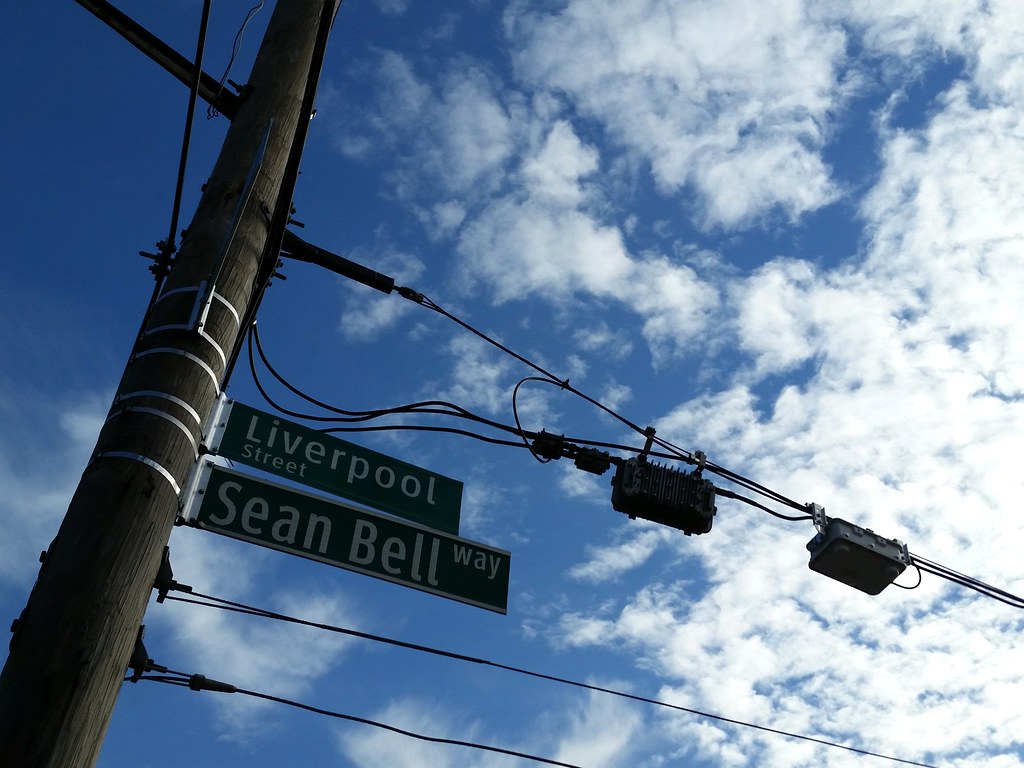
Sean Bell Way memorializes the unarmed man killed behind the wheel in a barrage of 50 bullets fired by undercover NYPD officers in 2006, shortly after leaving his bachelor party in the early morning of what would have been his wedding day. The officers said they believed someone in the car had a gun, and they opened fire on the vehicle after an intoxicated Mr. Bell drove it into an unmarked police van and struck one of the officers on the leg. You can read more about the controversial incident and its aftermath here (officers acquitted), here (financial settlement from the city), and here (one officer fired and others forced to resign).
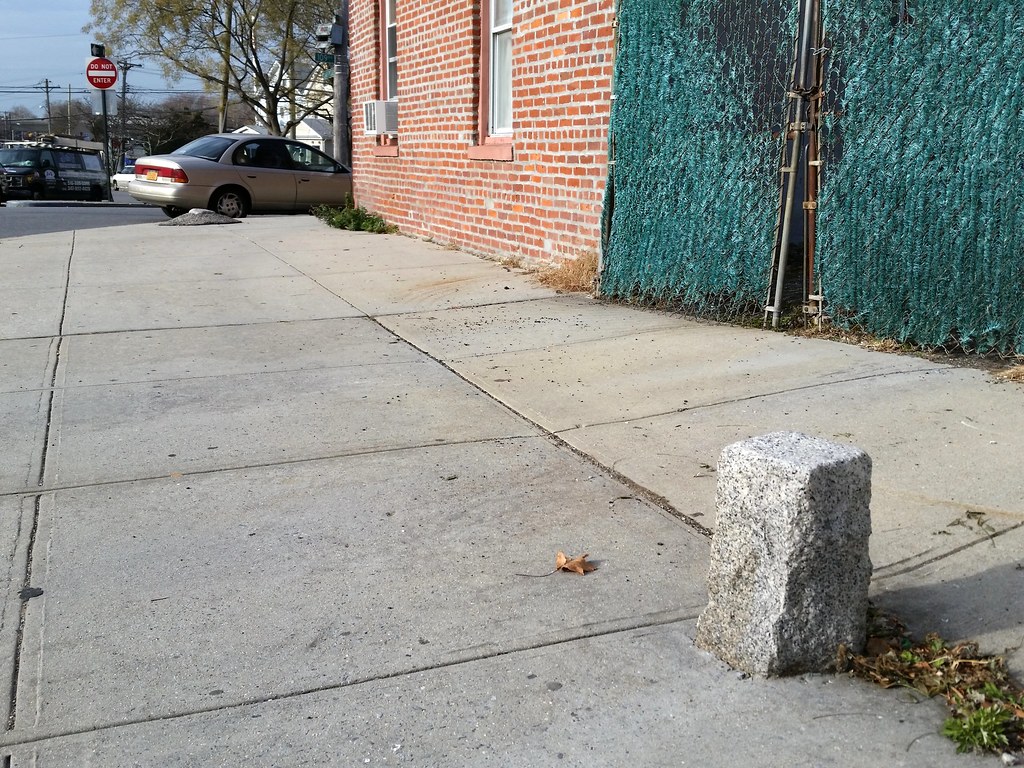
What's That Thing In The Sidewalk?
We actually have two things this time, here on 109th Avenue near 143rd Street in Jamaica: the little granite pillar in the foreground and a similar but shorter nub of granite surrounded by a blob of asphalt in the background (close-up). My best guess is that these stones were set here sometime in the 1910s or early 1920s to mark the property line when this section of 109th Avenue was built through a then-undeveloped piece of land that once belonged to the Van Siclen (or Sicklen) family. Near the bottom left corner of this 1909 map, you can see the property, labeled "A. Van Sicklen", before it was divided up by streets. By 1924, as this aerial image shows, the streets had been built, but the land was still undeveloped; the only house standing on the block pictured above at that time was an old Van Siclen dwelling (which still exists, as we'll see later in the day).

Peacocks (close-up), security cameras, and the Great Seal of the United States (close-up; the seal can be found at least three other times on the property). This is the third bootlegged version of the seal we've seen so far; here are the other two.
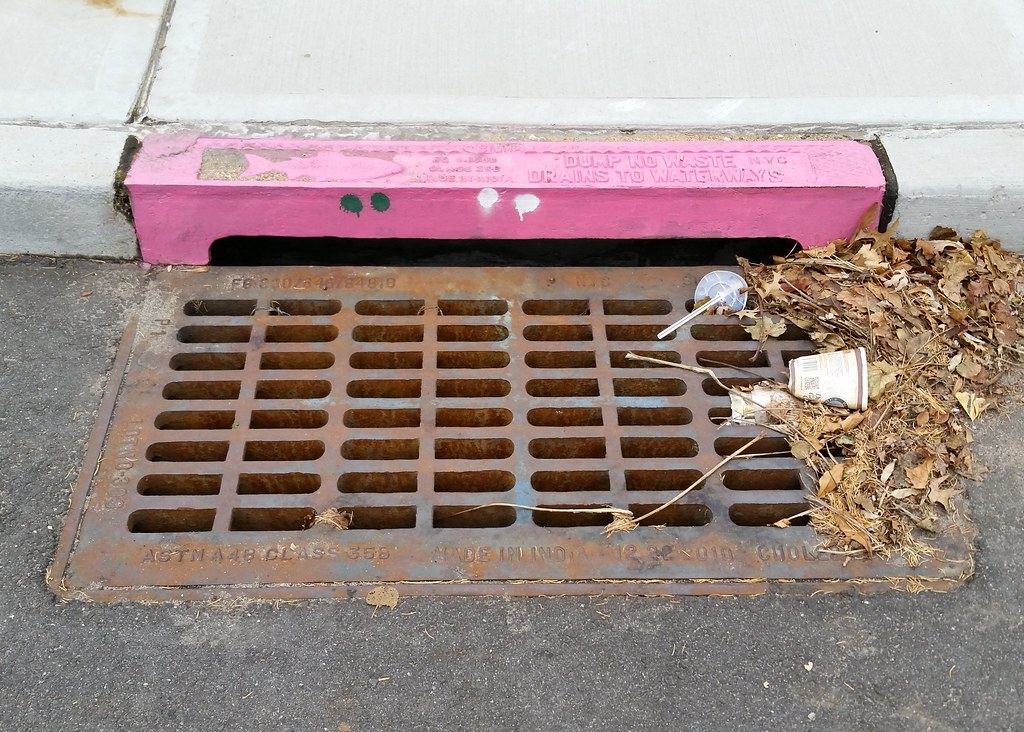
Most of NYC's sewers are combined sewers, meaning they collect both sewage from buildings and stormwater runoff from the streets in a single pipe and carry it all to a wastewater treatment plant. During times of significant rainfall or snowmelt, however, the increased volume of runoff entering the sewer can exceed the capacity of the system. In order to prevent a backup, the excess (including untreated sewage) is dumped directly into area waterways.
Some areas of the city, however, like almost all of southeastern Queens, have two separate sewer systems: one that carries sewage from buildings to a treatment plant and one that channels stormwater runoff directly to a local waterway. This prevents heavy volumes of runoff from overloading the treatment system and causing sewage overflows, but it also means that any pollutants in the runoff will be discharged into the city's waterways without treatment. Hence the warning on the storm drain above, which I assume was painted pink to call further attention to its message. (Other nearby storm drains were painted bright colors as well. Also, if you're wondering what the green and white dots are, here's your answer.)
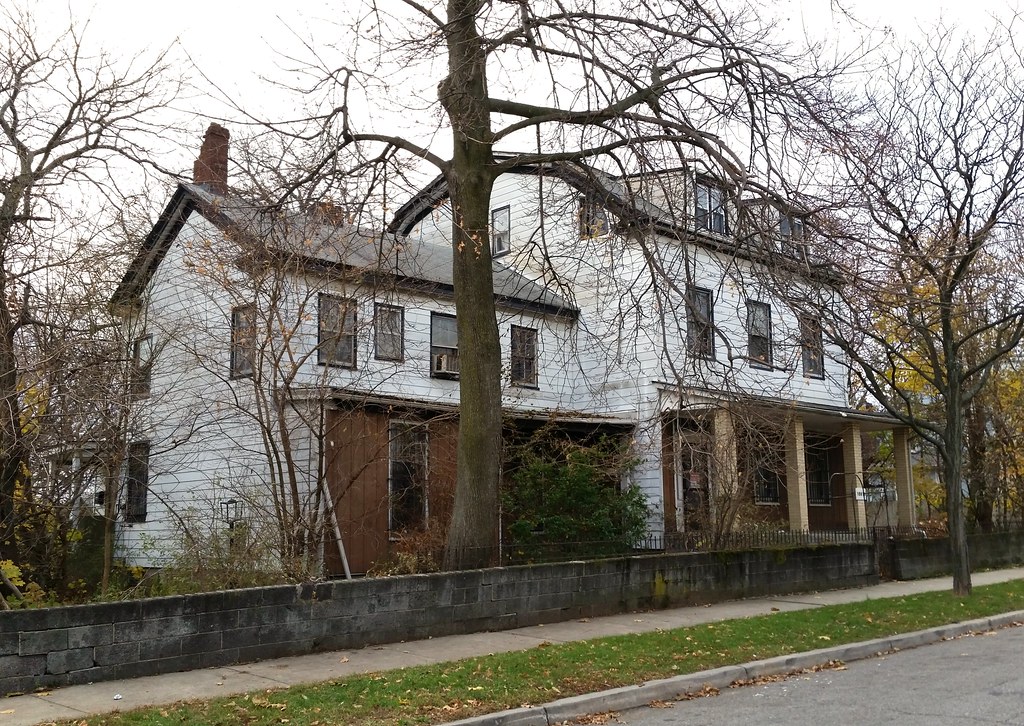
This is the old Van Siclen (or Sicklen) house (bird's-eye view) located around the corner from the granite markers we saw earlier today. The only information I can find about the structure comes from a few old photos of it added to the collections of the New York Public Library in the 1930s. Each of the photos has a description that was filed with it. According to one of these notes, the house was "said to be about two hundred years old" in 1931, but that sounds a little questionable to me. The other two notes indicate that a Disbrow and a Greenwood owned the house before it came into the possession of Van Sicklen.

The AirTrain terminal in Jamaica boasts of the "jazz legends . . . who have had an historical association with the Borough of Queens", although its list of musicians leaves out some pretty big names, including Earl Bostic, Wild Bill Davis, Lena Horne, Rose Murphy, Slam Stewart, and Cootie Williams.

